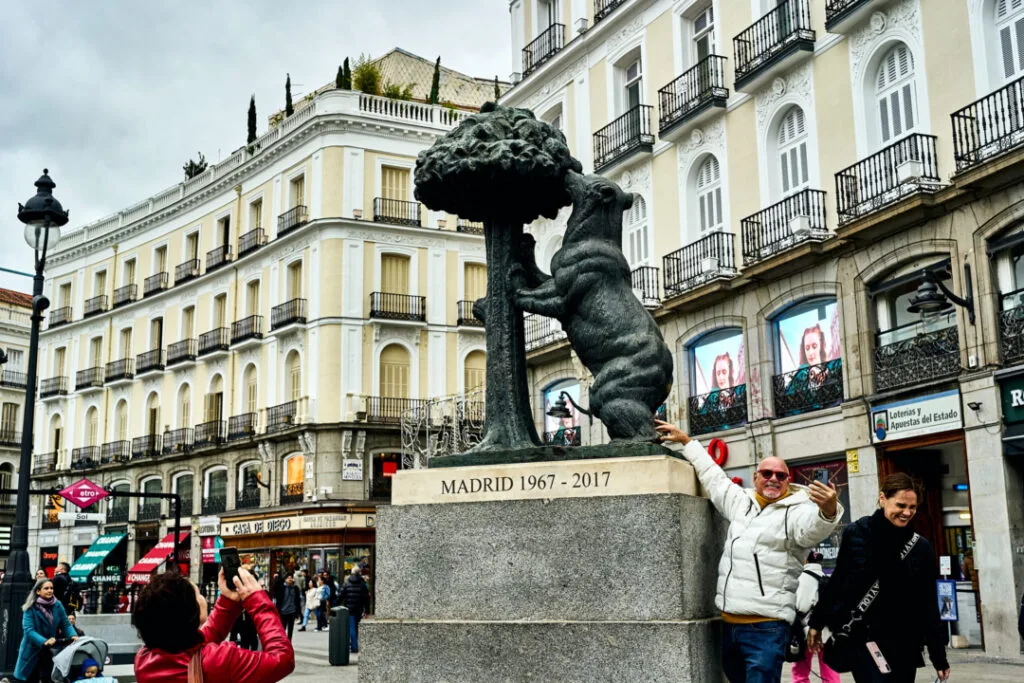
Why a bear and strawberry tree?
Visitors seeking an Instagrammable picture of themselves in Madrid often head to the statue of the bear and strawberry tree in Sol. It’s an iconic symbol that appears all over the city from manhole covers to public bins, to the logo of the much-maligned Atlético de Madrid – Madrid’s other football team who are sometimes referred to as Patético de Madrid by unkind Real Madrid supporters! So why is this statue in particular so popular with visiting tourists?
The work of sculptor Antonio Navarro Santafé, the bronze Oso y Madroño statue was installed in 1967, the very same year Madrid’s coat of arms got a modern update. While the position of the seven stars and the size of the crown were changed, the essential core of Madrid’s heraldry remained the same with the bear still “standing up” with its forelegs against a strawberry tree. This begs another question: Just what do bears and strawberry trees have to do with Madrid? The answer goes back to the 13th century when Madrid’s heraldry was first created.
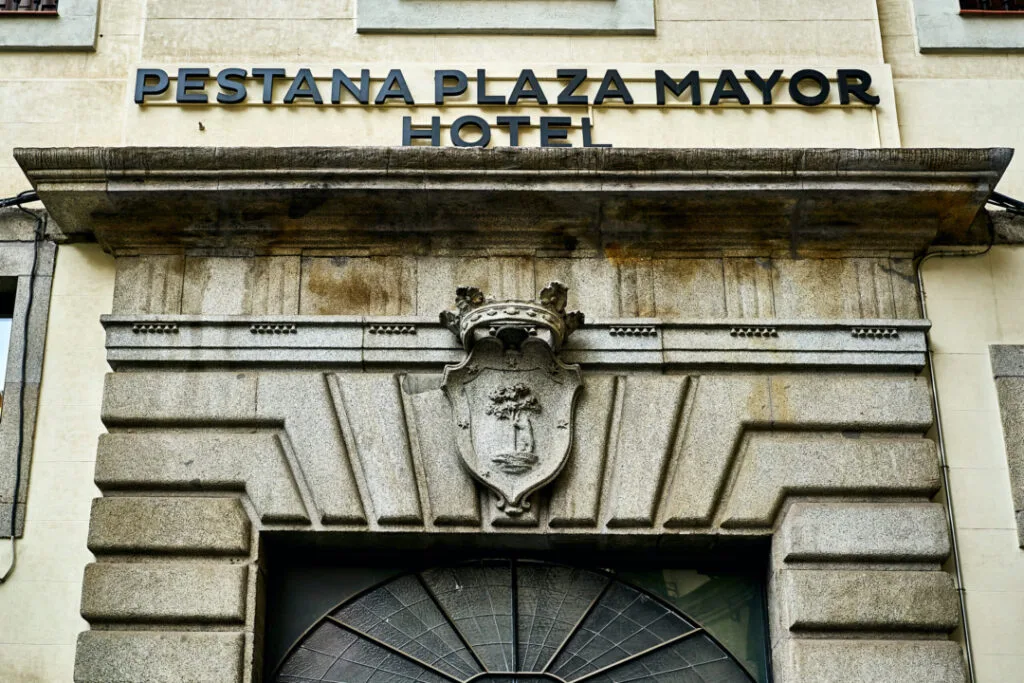
The bear
Let’s travel back to the 13th century, a time when the walls of Madrid only encompassed the area around the palace up to the outer edge of the Plaza Mayor and La Latina up to the Plaza de los Carros. These were feudal times in which the Iberian peninsula was split between warring Christian kingdoms and Muslim taifas. Back then, Madrid was a small medieval town that had been conquered just over 100 years ago by Alfonso VI of Leon on his way to the more important prize of Toledo.
Outside the safety of the city walls lay vast swathes of forests where inhabitants might face attacks by brigands or even worse, wild bears, which could in those days be found in abundance. Not a great area for lone travellers, but an excellent spot for royal hunting parties. According to ABC, legend has it that Alfonso XI was so pleased with bagging a huge bear out by El Pardo that this figure was added to the heraldry borne by knights from Madrid while out fighting.
The first time the bear appeared on Madrid’s heraldry was on all fours against a field of silver in 1211 during a campaign against the kingdom of Murcia. Shortly after, another element was added: the seven stars representing Ursa Major or Ursa Minor (no one’s sure if it’s the big or little bear) appeared on the body of the bear before later drifting to the edges of the shield.
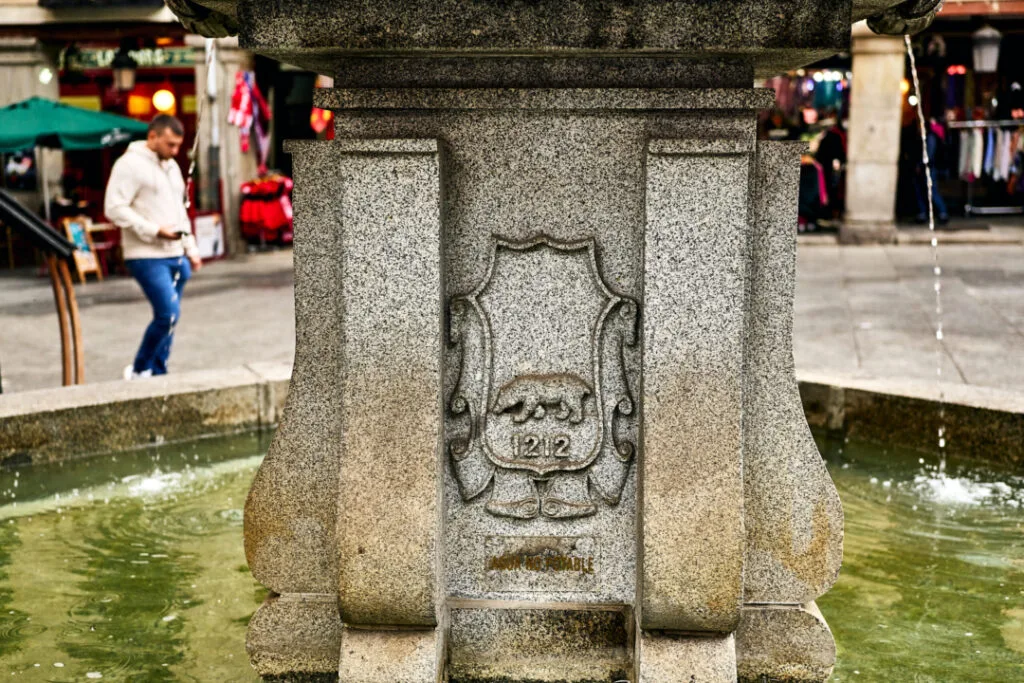
The strawberry tree
The “reconquest” of Muslim Spain very much depended on the Catholic church. In exchange for supporting military campaigns, the church expected to be allotted land. This is why a 20-year spat broke out between Madrid’s council and the church over ownership of land around its walls. Eventually, an agreement was reached in 1222: the clergy was granted valuable grazing land for livestock while the town got wooded areas. This agreement was cemented in the city’s heraldry with the bear now standing with its paws against a tree showing that this was the land owned by the council.
So why was the madroño, or strawberry tree chosen? The official line used to be that, like the bear, this rather shrub-like tree was found in great abundance in the forests around Madrid. However, while the town council has now assiduously planted madroños all over the city in places like Calle Mayor and Retiro, modern botanists do not think it was native to the area. Another theory is that as its leaves were thought to cure the plague, it had been added for this reason. However, we’re talking about a century before the black death, so this might not hold water either. What makes the most sense is that the tree was never intended to be a particular tree, simply a tree with red fruits.
Madroño liquor
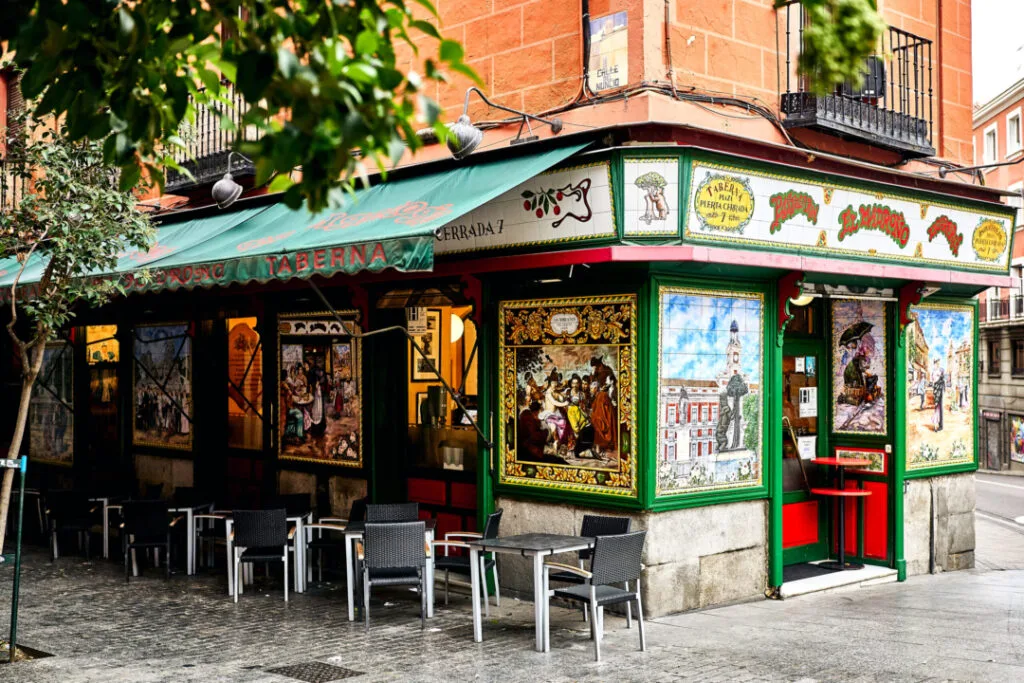
If you’d like to sample odd-looking spiky fruit, it ripens between November to December. While perfectly edible it’s got a rather gritty texture and isn’t particularly sweet. Much better to try it in liquor form in bars around the Plaza Mayor where it’s served in chocolate-covered wafer cups. My favourite place for this is El Madroño, a bar that’s not only great for free tapas but also has fantastic tiled illustrations behind the bar showing the development of Madrid’s coat of arms.
The crown and the disappearing dragon
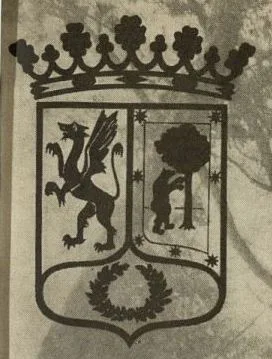
of arms between 1842 to 1967
The final element of today’s coat of arms is the crown. This was added in 1544 when Charles I bestowed the honour of the imperial crown on the town, shortly before his son Philip II effectively made Madrid the capital of Spain in 1561. Now, the crown is a key element in Madrid’s coat of arms and in the 1967 redesign was increased in size to give it greater prominence. It’s an interesting decision bearing in mind that Spain was under Franco’s rule at the time and did not have a king until the dictator’s death!
Another bit of interesting trivia regarding Madrid’s coat of arms is that for some time, the bear and strawberry tree shared space with a dragon. The decision to add this mythical beast was made in 1842 based on a 16th-century account of a fire-breathing dragon that had been carved above the door of the Puerta Cerada, a medieval gate to the city that had long been destroyed. I’ve heard that this version can still be seen around the city as it was only phased out in the 1967 redesign. If you spot one, please let me know where!
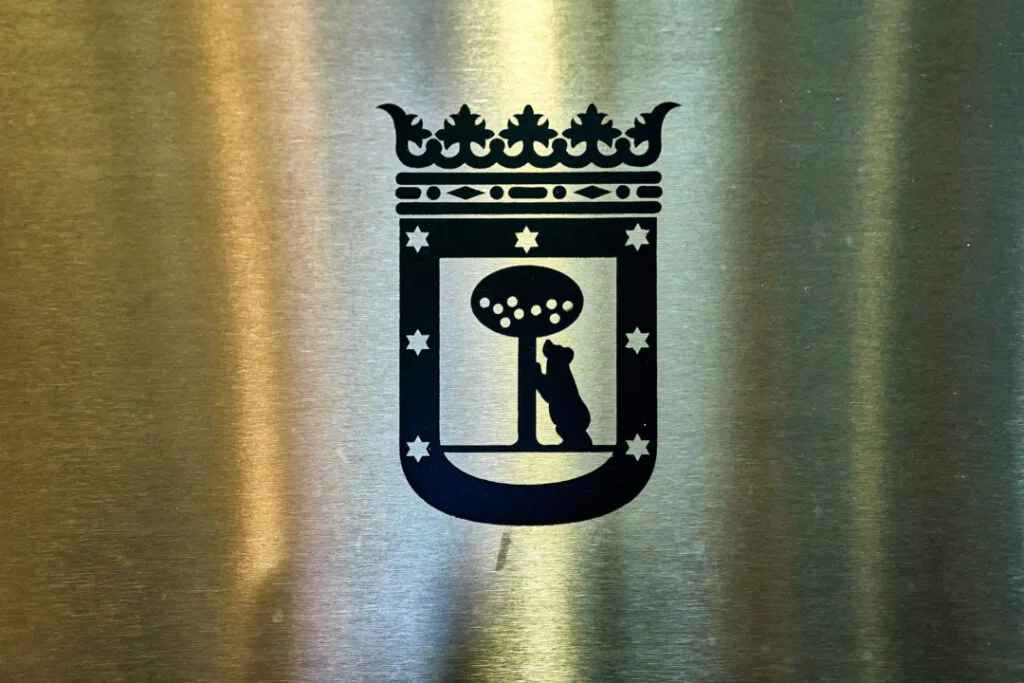
The evolution of the coat of arms
- 1211: The bear first appeared on all fours against a field of silver during a campaign against the Kingdom of Murcia. Shortly after ,seven stars, representing Ursa Major or Ursa Minor, were added to the bear’s body.
- 1222: Following a land dispute resolution between Madrid’s council and the church, the bear was depicted standing with its paws against a tree, symbolizing the city’s ownership of wooded areas.
- 1544: Charles I bestowed the imperial crown on the town of Madrid, adding it to the coat of arms. This was shortly before his son, Philip II, made Madrid the capital of Spain in 1561.
- 1842: A dragon was added to the coat of arms, inspired by a 16th-century account of a fire-breathing dragon that had been carved above the door of the Puerta Cerrada.
- 1967: During a redesign, the dragon was removed, the crown was increased in size for greater prominence, and the modern version of Madrid’s coat of arms was finalized, featuring the bear and strawberry tree.
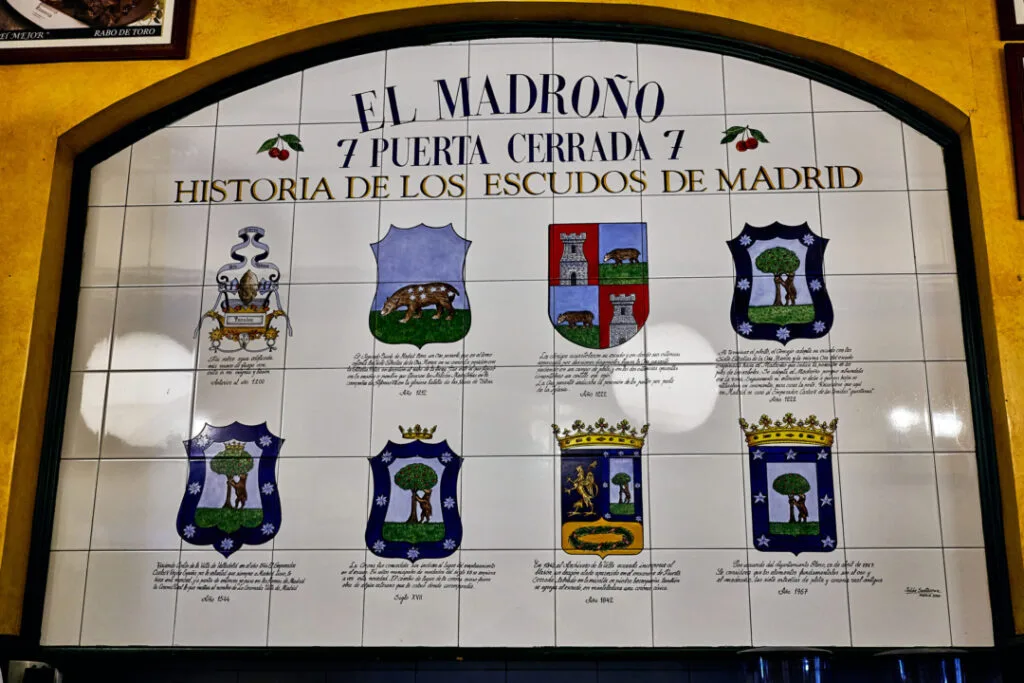
Oso or Osa? Sexing the bear
While the modern statue of the bear and the strawberry tree is called “el oso y madroño”, if you look between its legs you might notice this male bear is missing its tackle and could well be an “osa” that is, she bear. In fact, she was always a she in medieval records. At some point later, she became a he. The explanation of this sex change is simple: it’s easier to say “la villa del oso y el madroño” instead of “la Villa de la osa y el madroño”. The feminine has one extra syllable, so fails to trip off the tongue as easily.
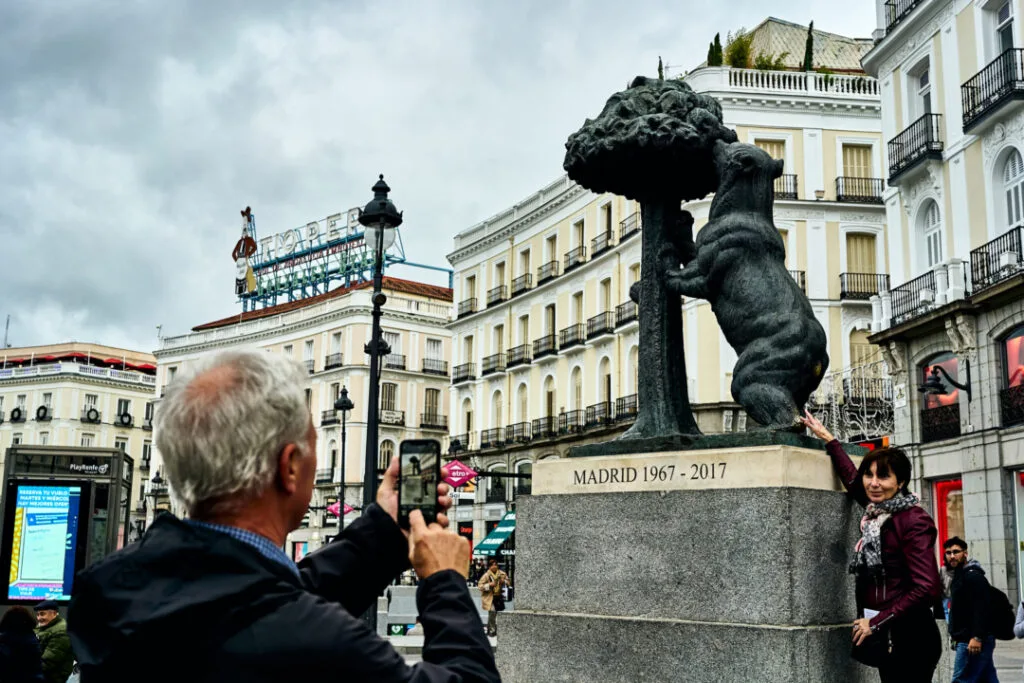
A roaming bear
Leaving aside the question of whether it’s a he or she bear, Navarro’s statue and its plinth weighs in at a whopping 20 tonnes. Surprising then that it’s been moved a total of 3 times during its stay in the square, most recently during the 2023 renovation. Still, she’s quite easy to find, simply follow the crowds of snap-happy tourists to her lair.
Did you enjoy this article? If so, perhaps you’d like to come on a historical walking tour of Madrid with me, the writer of The Making of Madrid. A freelance journalist and Lonely Planet guidebook writer, I know a lot about the history of the city and love to share my knowledge with others. Get in touch to discuss availability and prices.
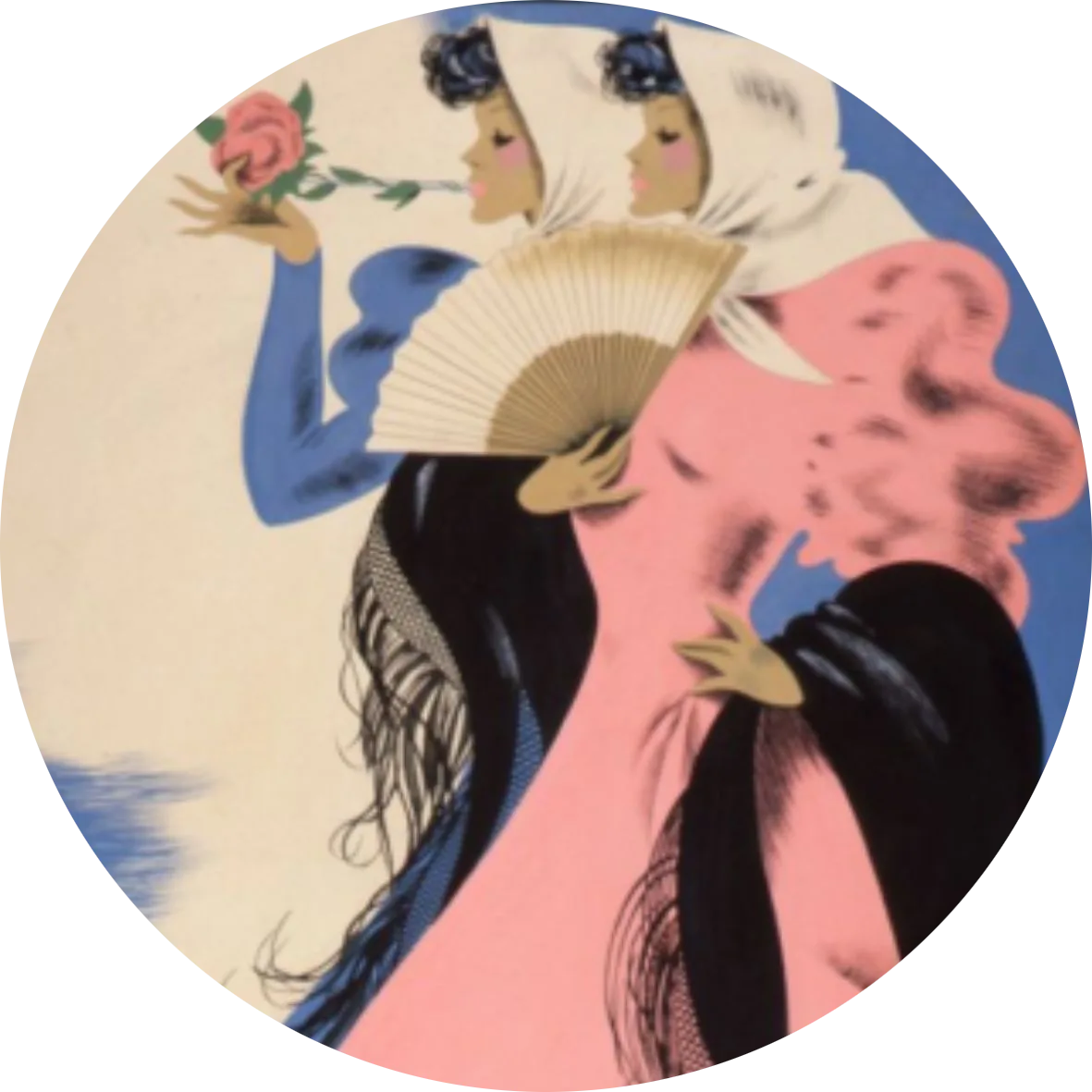
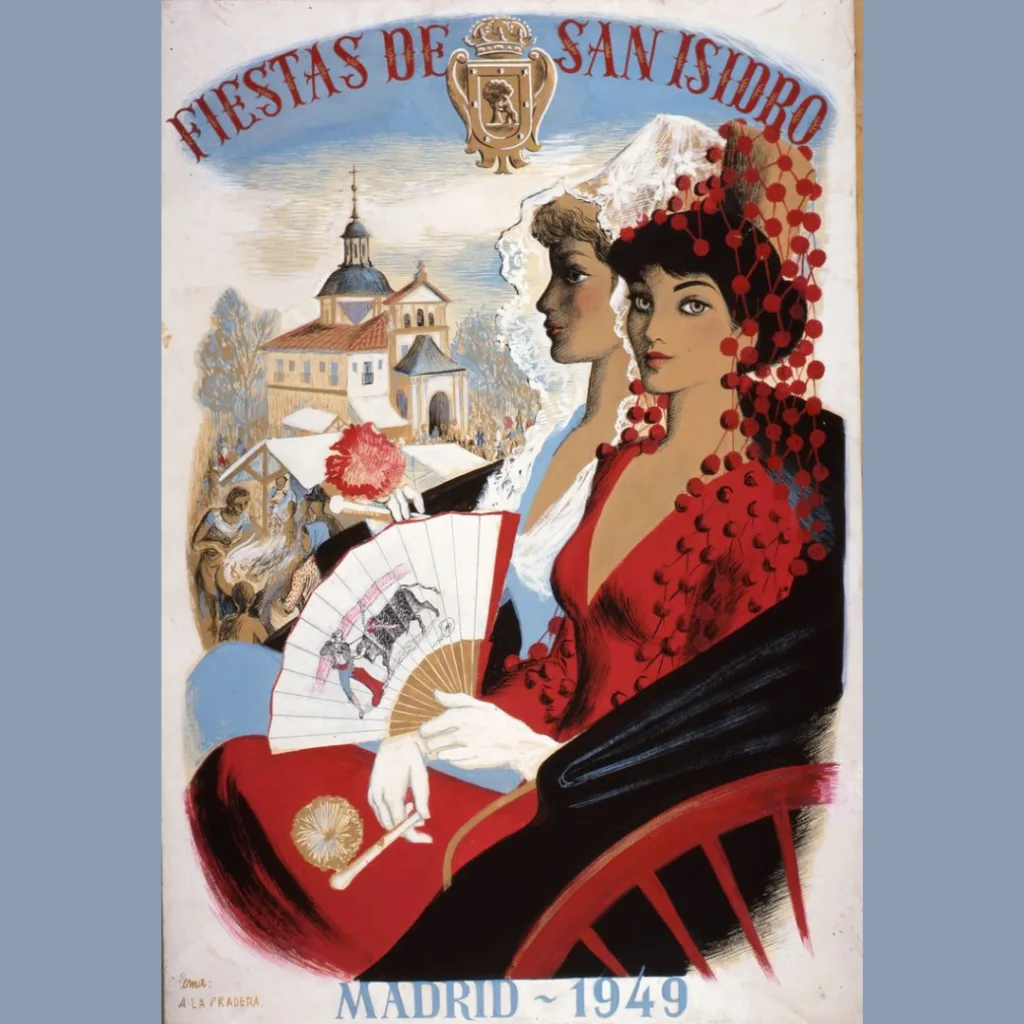
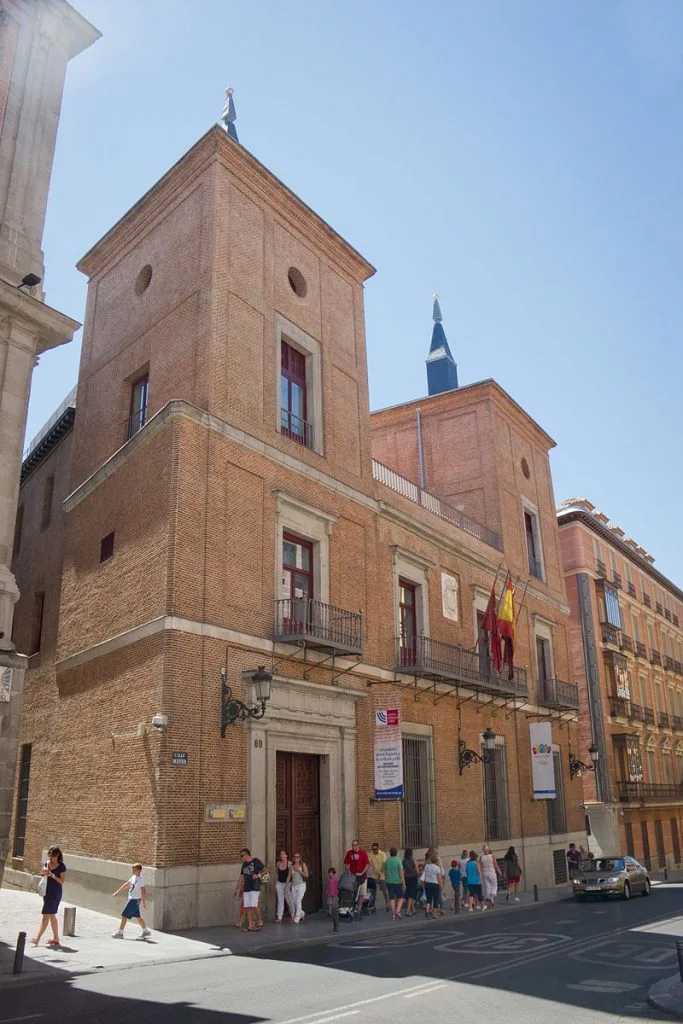
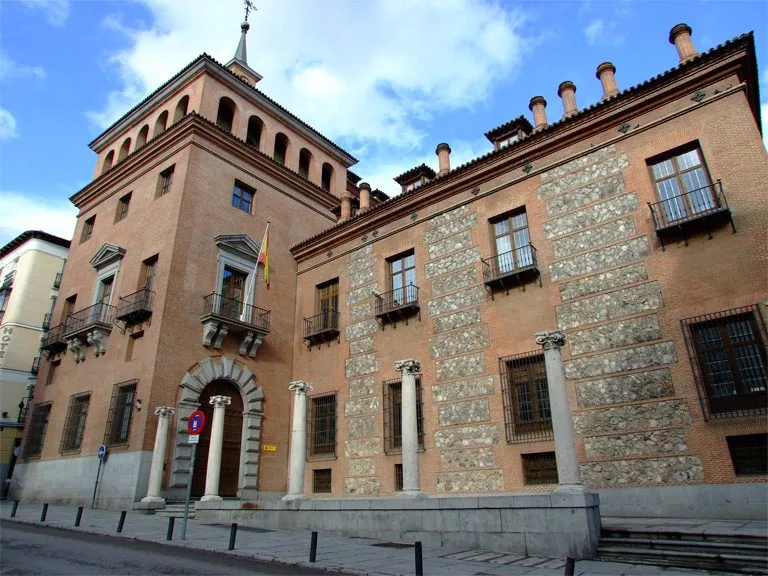
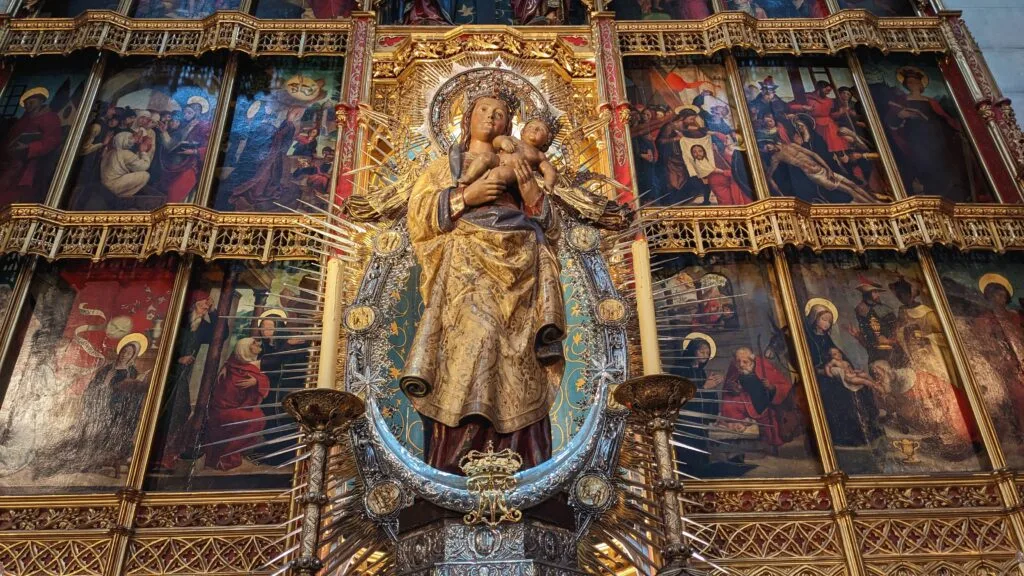
Great article Felicity! It’s interesting about the dragon, on the Arganzuela monument near the river, the coat of arms has a dragon on it too. That was built in 1833 for Isabella II which predates the official adoption by a few years!
Oooh, a sighting! Will investigate. Thanks!
Pingback: Why Is the Madroño Important to Madrid? - The Making of Madrid